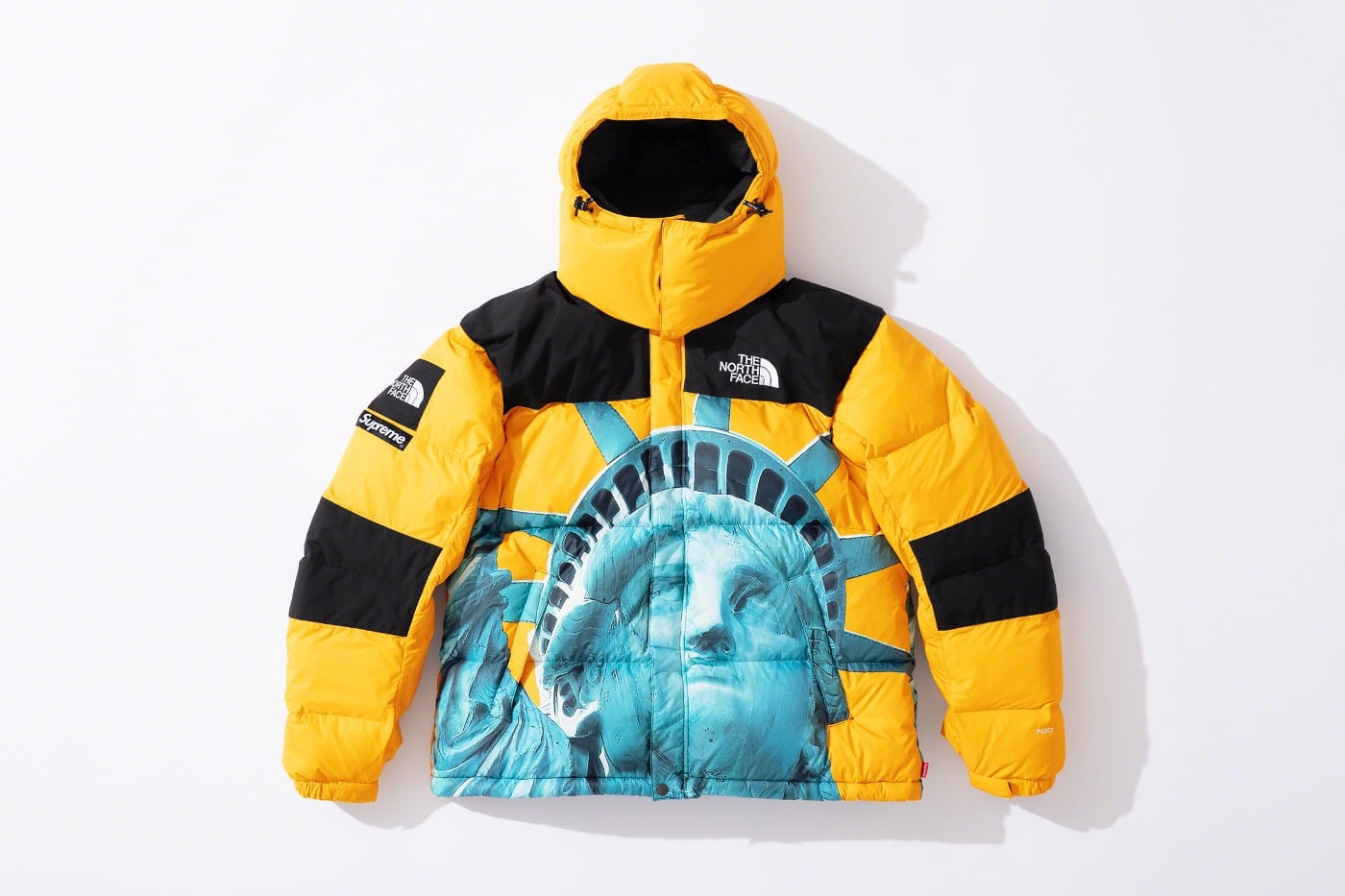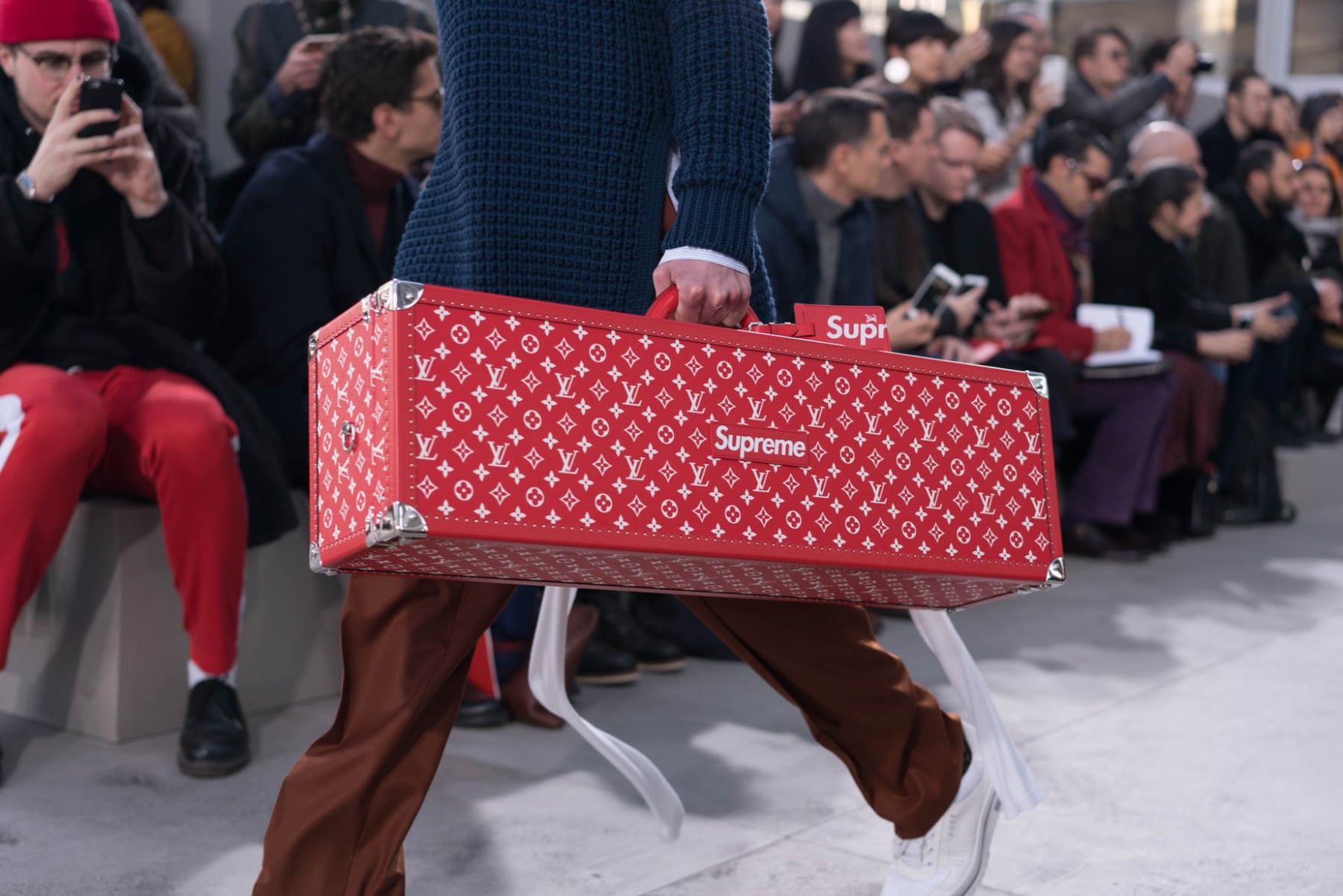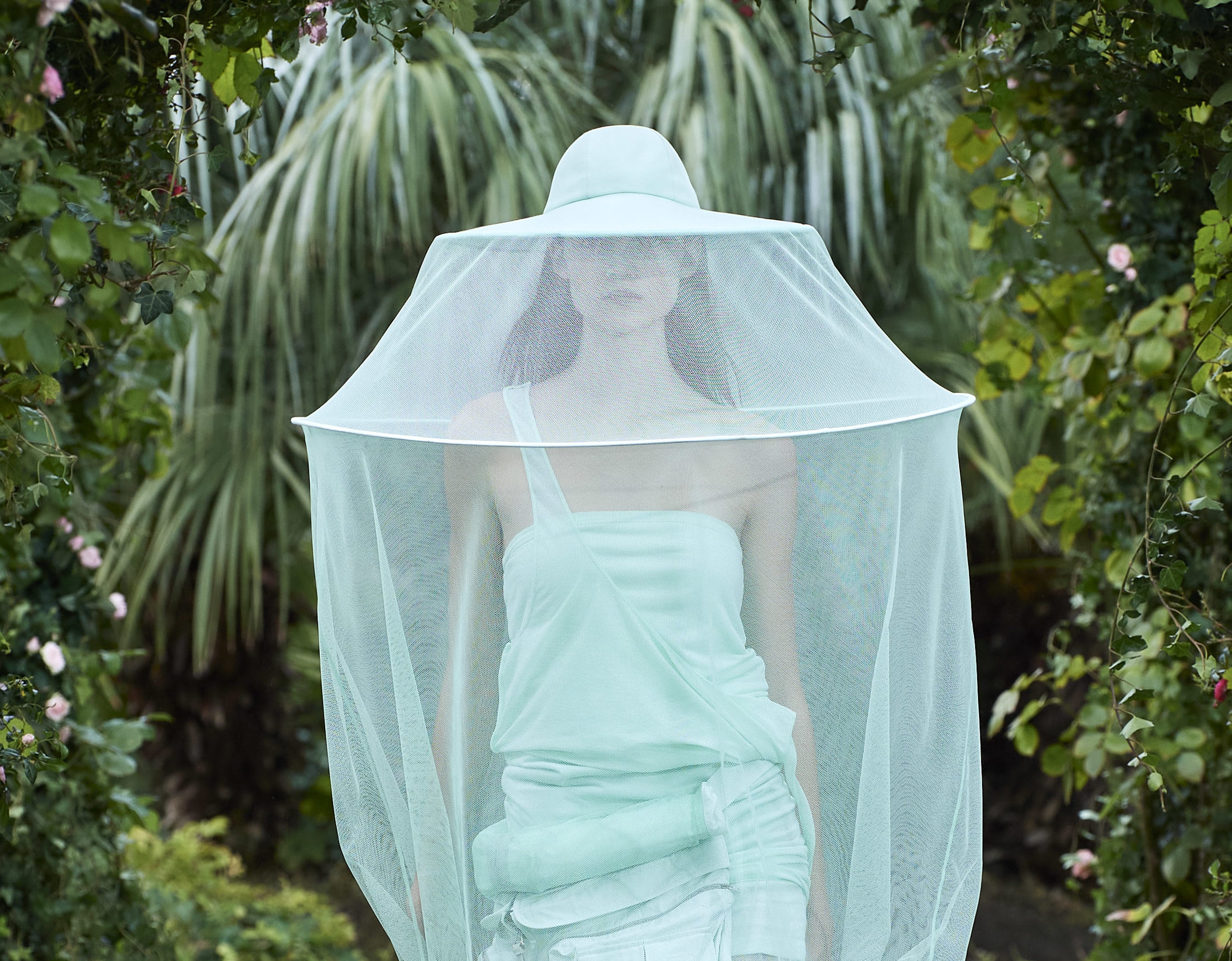[vc_row][vc_column][vc_column_text]
Luxus Plus Magazine continues its series on the great collaborations in the history of fashion and luxury. Today, we take a closer look at the most prolific brand in terms of collaborations: Supreme. Or how, for almost 20 years now, we have been witnessing what in Novlanguage would be called a phenomenon of intensive “supremization” of the sector.
Would you like to take a look at Supreme again? It must be said that since the early 2000s, it has been difficult to escape the buzz around the brand. Not a season goes by without a new collaboration project being announced, with marketing campaigns, celebrity endorsements and influencers. The good thing about Supreme is that there’s something for everyone, good or bad, because you have to be a big fan of logomania anyway. But of course for all purses on the other hand.
Supreme is THE streetwear brand created in 1994 by James Jebbia at the corner of Lafayette Street and Prince Street in New York. Its undeniable strength is to know how to create desire through lack. The brand works intensely in the niche of scarcity. As the New York Times points out: “With Supreme, you have to earn the right to buy. Having access to products is often a struggle. You have to put on your sneakers (Nike, of course, with whom Supreme first collaborated in 2002), stand in line for hours and have the patience to be part of the Happy Few, which will feature a brand product with the red box logo that is so recognizable today and whose typography is inspired by the artist Barbara Kruger. And above all, so sought-after that the black market is full of offers at exorbitant prices.

On soulignera ici la dichotomie pour Supreme d’être une marque dont la mission initiale est de promouvoir la culture downtown et skate new-yorkaise (donc une culture de rue qui par définition se veut démocratique), et de se retrouver finalement quasiment inaccessible au plus grand nombre. James Jebbia s’est approprié les codes du luxe et a vite compris l’intérêt pour sa marque de franchir le pas de la luxification : des collections disponibles en quantités restreintes, une sélectivité des clients, l’association avec des célébrités, puis très rapidement des collaborations médiatiques avec des marques hautement désirables.
Featured photo : © Trendshop[/vc_column_text][/vc_column][/vc_row][vc_row][vc_column][vc_cta h2=”Find the full article on magazine.luxus-plus.com” txt_align=”center” add_button=”bottom” btn_title=”READ MORE !” btn_style=”3d” btn_color=”black” btn_size=”lg” btn_align=”center” btn_button_block=”true” btn_link=”url:https%3A%2F%2Fmagazine.luxus-plus.com%2Fthe-great-collaborations-in-the-history-of-fashion-and-luxury-episode-4%2F%3Flang%3Den|||”][/vc_cta][/vc_column][/vc_row]








